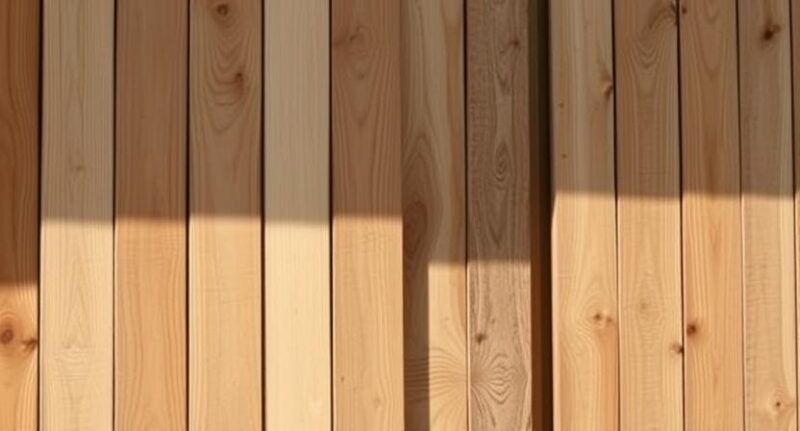When choosing construction timber, many assume all planks are more or less the same. Slight color variations or a few knots may seem insignificant — but professionals with hands-on experience know better.
First impressions can be misleading
At the start of a building project, lower-priced timber can appear perfectly adequate. It looks clean, smells like fresh wood, and seems straight and sturdy. But just a few weeks under sunlight, rain, and wind often reveal the real story.
Planks may begin to warp.
Knots can loosen and fall out.
Boards shrink, crack, or become unstable.
For projects like facades or decks, these aren’t just aesthetic issues — they often lead to costly repairs and rework.
The drying process tells the real story
According to seasoned builders, one of the biggest differences lies in how the wood is dried. Lower-cost timber is often inadequately dried or not dried at all, leaving it vulnerable to deformation.
Higher-grade timber tends to be thoroughly dried and strength-rated. These boards are more stable, absorb less moisture, and are easier to work with. The feel is noticeably different — some stay flat and true, others twist and bend unpredictably.
The hidden cost of cutting corners
At first glance, using cheaper materials seems like a money-saver. But over time, the downsides show up: boards shift, finishes peel, moisture causes damage, and the structure starts to show wear. Soon enough, you’re fixing or even rebuilding parts of the project.
One craftsman shared a story about a fence built from low-cost planks. After just two winters, many boards had twisted so badly they resembled corkscrews. In the end, the cost of replacing them nearly doubled the original budget. Choosing well-prepared, stable timber from the start would’ve been the cheaper option overall.
Finding dependable timber
Price alone isn’t a guarantee of quality. What matters is sourcing materials from suppliers who understand what makes wood last. Look for those who offer calibrated and certified planks, provide clear specs, and can explain the differences between options like strength-rated, planed, or treated timber.
This approach saves more than money — it saves time, energy, and stress.
What stands the test of time?
Higher-quality boards hold their shape, keep screws firmly in place, and age with grace. They don’t work against your design — they support it for years.
On the other hand, cheap timber is a gamble. You might get lucky, but often, you end up paying more in the long run. In construction, time is money. So if you’re preparing to build, it’s wise to think not just about “will it hold up today,” but “how long will it last?”
